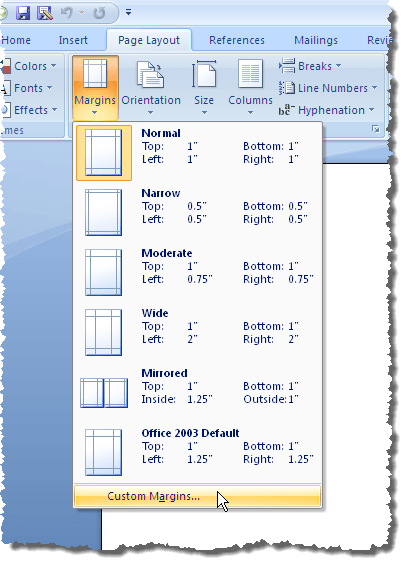

- How to set default page layout in word 2010 how to#
- How to set default page layout in word 2010 windows#
How to set default page layout in word 2010 windows#
To remove a keyboard layout on Windows 10, use these steps:
How to set default page layout in word 2010 how to#
How to remove keyboard layout on Windows 10 Once you complete the steps, the icon will appear in the taskbar's notification area, allowing you to see the available layouts and switch between them.Īlternatively, you can also use the Windows key + Spacebar keyboard shortcut to cycle between the available keyboard layouts quickly. Turn on the Input Indicator toggle switch. Under the "Notification area" section, click the Turn system icons on or off option. To enable the Input Indicator in the taskbar, use these steps: If the Input Indicator is not available in the taskbar, you can enable it using the Settings app. 1 and 2 to switch back to the default layout.Īfter you complete the steps, you can start typing with the new keyboard layout.

In the Open dialog box, browse to the folder that contains the Normal.dotm file. If you open Normal.dotm from the Finder, Word will create a new blank document based on the template.

To make changes to Normal.dotm, you must open the file from Word. You can customize the Normal template and change default settings for many aspects of a document, such as text formatting, paragraph formatting, document formatting, styles, text, pictures, AutoText entries, and keyboard shortcuts. On the Format menu, click Document, and then click the Layout tab.Ĭhange other default settings in the Normal template For example, the layout attributes for new blank documents are based on the Normal template. When you’ve made your changes, click Set As. On the Paragraph dialog box, select the settings you want to change (for Indents and Spacing and Line and Page Breaks, as desired). On the Format menu, click Document, and then click the Margins tab.Ĭhanging the default layout in any template means that the section breaks, headers and footers, and other layout attributes are used in every new document that is based on that template. Make sure the Home tab is active and click the Paragraph Settings button in the lower-right corner of the Paragraph section. For example, the margins for new blank documents are based on the Normal template.

Both default and custom watermarks are available. Make any changes that you want, and then click Default.Ĭhanging the default margins in any template means that the margin settings are used in every new document that is based on that template. Watermarking your documents can be essential in multiple circumstances such as establishing a documents author or priority. On the Format menu, click Font, and then click the Advanced tab. Open the template or a document based on the template whose default settings you want to change. For example, the character spacing for new blank documents is based on the Normal template. Changing the default font also changes the Normal style, which affects any other style that is built on the Normal style.Ĭhanging the default character spacing in any template means that the settings for scale, spacing, position, kerning, and other typographic features are used in every new document that is based on that template. Note: Most of the styles in Word are based on the Normal style.


 0 kommentar(er)
0 kommentar(er)
